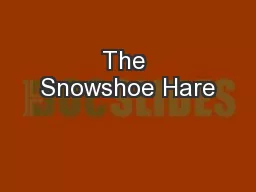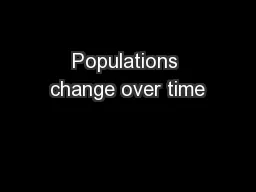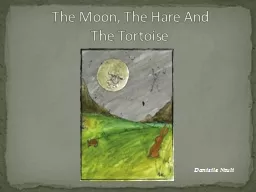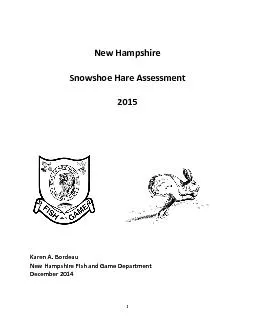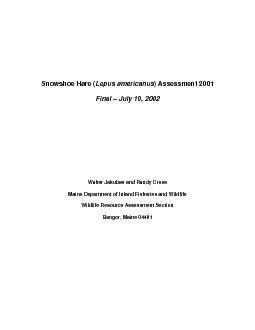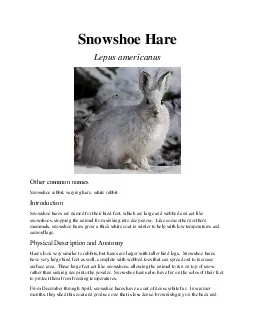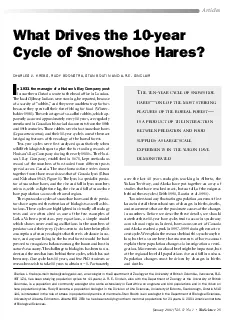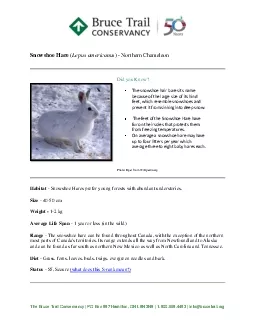PPT-The Snowshoe Hare
Author : olivia-moreira | Published Date : 2017-05-01
A Study in Adaptations and Climate Change Snowshoe Hares Camouflage Adaptations What do you know about The main habitat of the snowshoe hare is a taiga biome The
Presentation Embed Code
Download Presentation
Download Presentation The PPT/PDF document "The Snowshoe Hare" is the property of its rightful owner. Permission is granted to download and print the materials on this website for personal, non-commercial use only, and to display it on your personal computer provided you do not modify the materials and that you retain all copyright notices contained in the materials. By downloading content from our website, you accept the terms of this agreement.
The Snowshoe Hare: Transcript
Download Rules Of Document
"The Snowshoe Hare"The content belongs to its owner. You may download and print it for personal use, without modification, and keep all copyright notices. By downloading, you agree to these terms.
Related Documents

